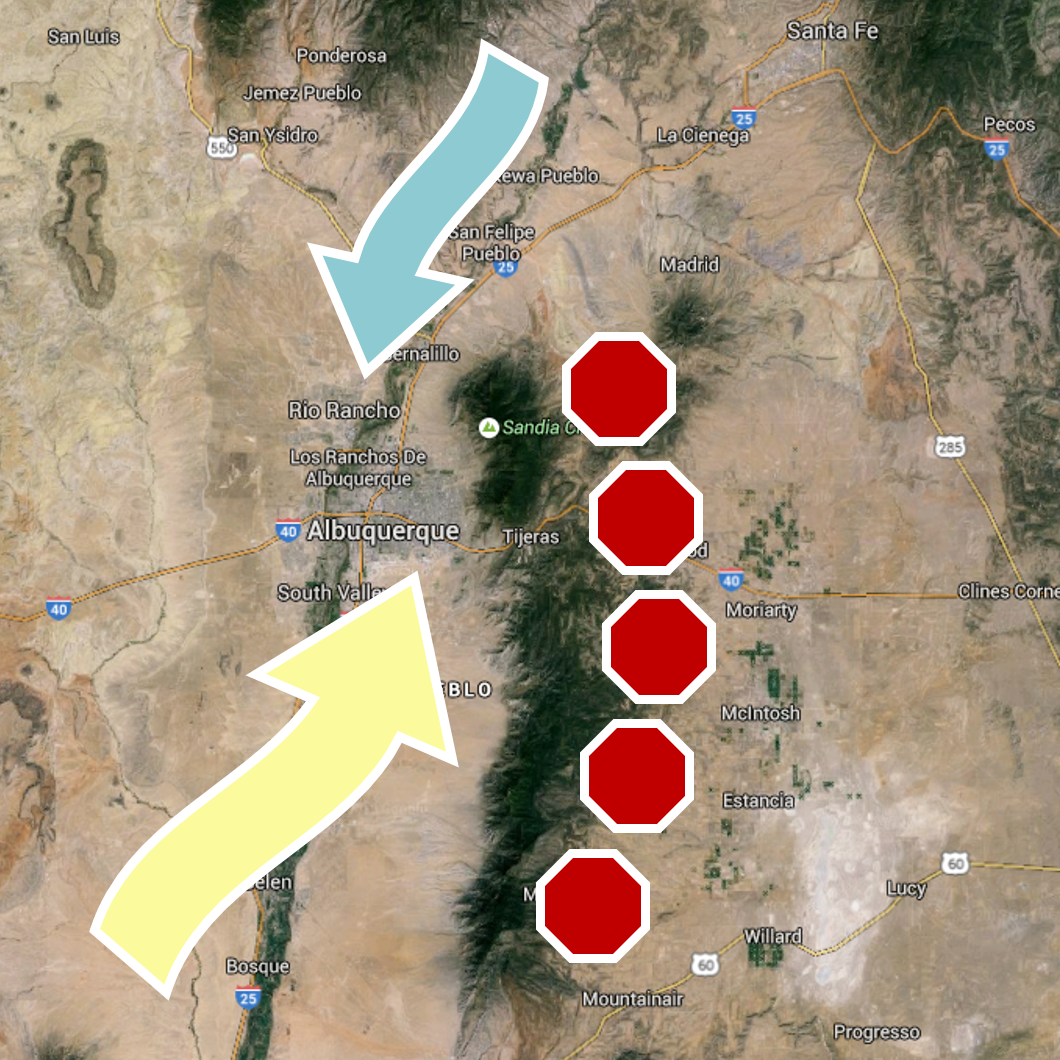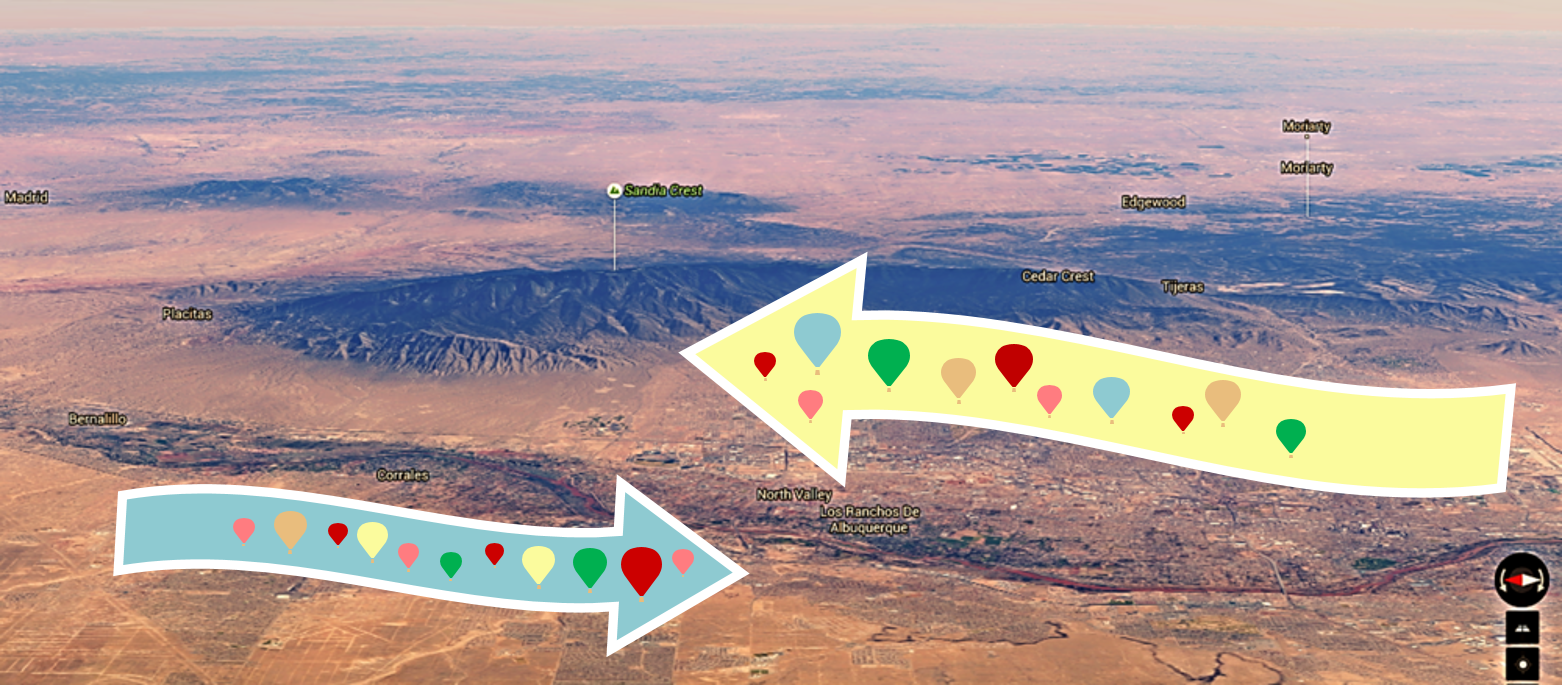Round Balloons in a Square Box
/I love waking up in Albuquerque on clear mornings: a glance out my west-facing window often reveals a couple hot air balloons dotting the horizon.
Albuquerque is the self-proclaimed “Ballooning Capital of the World,” and ballooning is popular here year-round thanks to well-suited weather. Cloudless skies and mild temperatures are common across New Mexico, but the terrain around this city in particular sometimes shapes a favorable wind pattern known as the “Box.”
The Sandia Mountains form a barrier to the east, channeling air currents through the valley in which Albuquerque is situated.
Albuquerque is high-altitude at 5,000 feet, but it’s framed by even higher terrain—the 10,000-foot Sandia Mountains to the east and a gradual incline up to Santa Fe’s 7,000 feet to the north. The mountain peaks shield the urbanized valley from high pressure centers and winds (at least until “gap winds” leak through canyons to mix with city air in strong bursts), but there’s no barrier to the north.
On chilly nights, land quickly sheds its sun-baked heat and the temperature of the air hugging it drops, rendering it denser in the process. (Remember the ideal gas law? Air’s temperature and density are indirectly related.) By sunrise, all that cold, heavy surface air is flowing downhill, and the sloped landscape directs it southward through the valley, bathing Albuquerque in a cool breeze.
Meanwhile, the prevailing autumn winds in New Mexico bring warmer air from the southwest. The “Box” forms when these warm southwesterly winds pass above the cool northerly current like two opposing lanes in an atmospheric highway. Hot air balloonists, normally beholden to a single wind, now have two directions to choose from!
On autumn mornings, cold surface air flows down from Santa Fe while warm southwesterly winds pass above it, creating two opposing currents for balloonists.
This pattern only lasts until sunrise reheats the whole valley, melting the cold southbound surface flow back into the main winds where it belongs. But for a few precious pre-dawn hours, pilots take advantage of the Box to loop full laps around the city, choosing whether to float north or south by controlling the balloon’s altitude and catching the current of their choice.
If winds set the horizontal direction of a hot air balloon’s journey, just how does a pilot maneuver vertically? Check back soon for more on the physics of ballooning!
This post was brought to you by the Albuquerque International Balloon Fiesta, which is truly a sight to behold.



